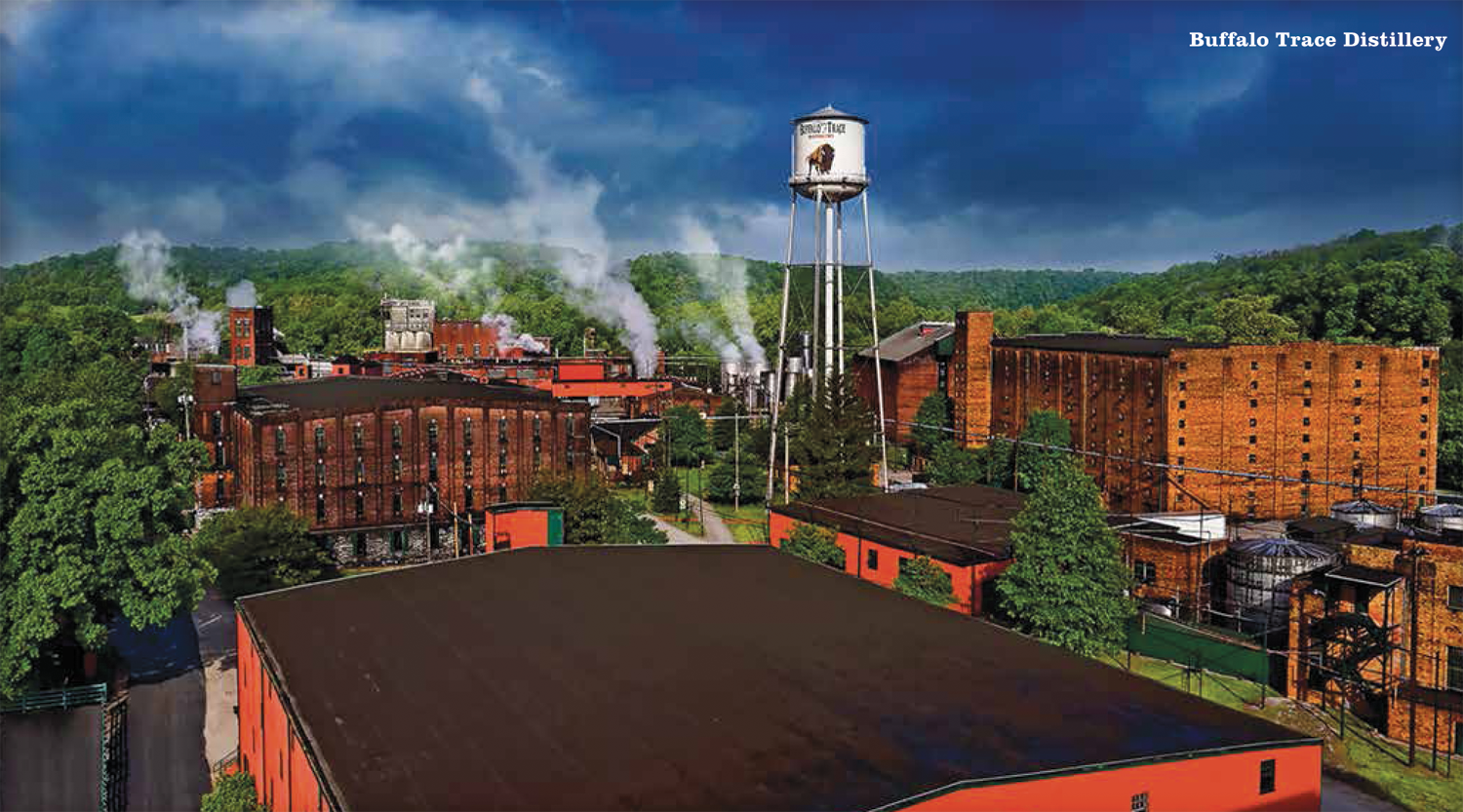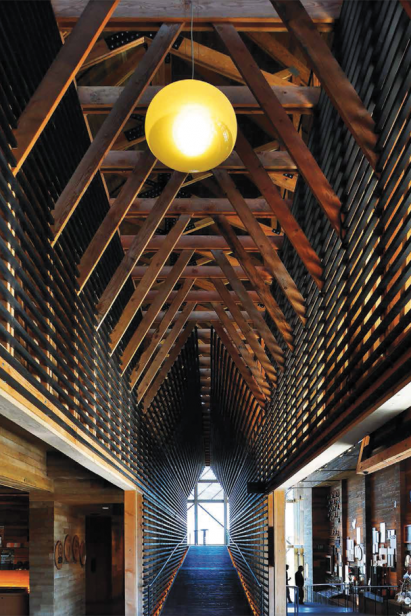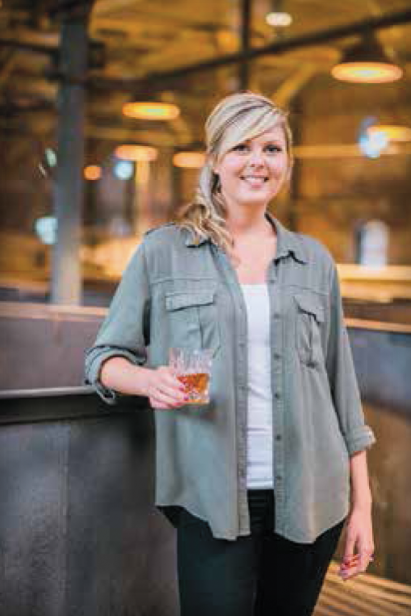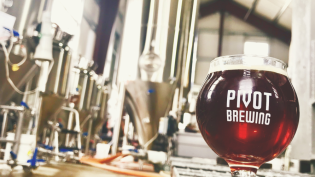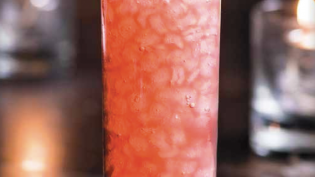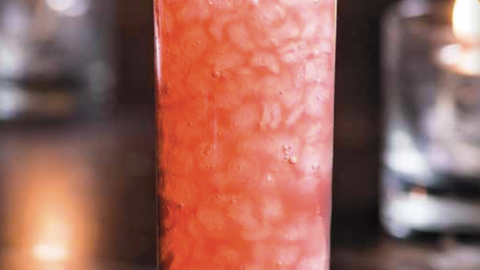Spirits Soar
March 14, 2017, symbolized the high times now being enjoyed by distillers like Tom Bulleit and the entire Kentucky bourbon industry.
The diminutive and dapper founder of Bulleit Distilling Co. was cutting the ribbon on its brand-new distillery in Shelbyville while thinking that he should go buy a lottery ticket. After all, the day was his birthday, his 30th wedding anniversary and 30 years since the longtime lawyer revived his family’s whiskey business—all rolled into one.
“As you can imagine, this is somewhat surreal for me,” Bulleit said. Recalling the first time he glimpsed the distillery’s fully constructed buildings from a distance, he said he asked himself, “How did this happen? This is absolutely incredible.”
The completion of Bulleit’s $115 million distillery marked the state’s most significant bourbon-centered project in 2017—only seven months after Bardstown Bourbon Co. opened a similar-sized operation last September. A year before that, Michter’s Distillery started a slightly smaller distillery in Shively, and amid those openings came the unveiling of Angel’s Envy late last fall. Heaven Hill and Four Roses are spending millions to expand manufacturing capacity and, like Jim Beam, they’re spending even more on rickhouses to hold that liquid inventory.
According to the Kentucky Distillers Association, just last year alone, the Commonwealth’s bourbon distilleries filled 1,886,821 barrels, breaking production records all the way back to 1967, when an all-time high 1,922,009 barrels were filled. By comparison, in 1999 only 455,078 barrels were filled. When 2016 ended, there were 6,657,063 barrels of bourbon aging across the Bluegrass State, just shy of the 1974 high water mark when 6,683,654 lay waiting for bottling. Yet while that record will be shattered this year, distillers won’t come close to slaking domestic drinkers’ thirst for Kentucky nectar.
“People are drinking bourbon faster than we can age it, so it shows we’re doing something right,” said Fred Noe III, master distiller at Jim Beam in Clermont. “It’s a great problem our predecessors weren’t lucky enough to experience.”
Yet given consumers’ fickle demands, such expensive expansion is also a great gamble. Unlike gin or vodka, which is made today and sold tomorrow, the return on bourbon—aged generally between two and 25 years—is all about future returns. Making products that won’t generate a penny of revenue for years is risky enough, but betting that drinkers will still want it when it’s ready is unnerving.
“When [consumers] want it, they want it,” said Noe, son of legendary Beam distiller Booker Noe. “And you hope they still want it when it’s ready.”
Domestic bourbon demand is off the charts, and global demand for the spirit is surging. David Sweet, president of Whisky Live, a Chicago-based producer of whiskey drinking events across the world, said spirits fans outside the U.S. cared little about bourbon 10 years ago. Five years later, however, demand for it started in large cities in England, Australia and France. Bartenders sought it for cocktails, and spirits enthusiasts were studying it and buying it over the internet.
“And now, because of bourbon’s massive demand, you have a shortage that’s—you guessed it—further heightened demand for bourbon,” said Sweet. “It’s like a candy you get to taste once and you have to have more of.”
In the past year, Bernie Lubbers, brand ambassador at Heaven Hill Distilleries, visited Poland and Germany to preach the gospel of bourbon to bartenders. Americana is big in Germany, so barbecue, hamburgers, hot dogs and country-themed restaurants are popping up in cities such as Berlin. Where those foods are found, bourbon and American rye whiskeys are on their bars.
“In Poland, at a place called Whiskey 88, I asked the bartender to make me a Manhattan, and he immediately grabbed a bottle of Mellow Corn [Kentucky corn whiskey],” Lubbers said of the increasingly popular Heaven Hill liquor. “I don’t know many bartenders in the U.S. who even know about Mellow Corn, but he did, and he knew how to use it. It’s exciting to see that outside our country.”
Old Guard and New Guard
Up to the 1990s, bourbon distillers’ primary job was reviving flagging sales. Vodka had eaten away its once-dominant market share, leaving brands scratching their heads over how to regain lost ground.
The needle moved modestly north when Buffalo Trace master distiller Elmer T. Lee created the industry’s first single-barrel offering, Blanton’s Bourbon. On its heels came Jim Beam’s high-proof premium offering, Booker’s, named after master distiller Booker Noe. And by the time Heaven Hill master distiller Parker Beam added Elijah Craig 12-Year-Old and Evan Williams single-barrel to the mix, bourbon’s turnaround had begun.
Save for Jimmy Russell, the 82-year-old master distiller at Wild Turkey, the old guard have passed away. The duty of making bourbon for the state’s largest and most historic distilleries is now the job of men in their 40s and 50s, some of whom are sons of their trailblazing fathers.
Where the old guard bore the task of making bourbon popular again, their replacements are expected to increase supplies of those legacy whiskeys while driving product innovation. It’s incumbent upon them to be brand evangelists, engaging storytellers and colorful personalities with space in their schedules for globetrotting.
A challenging job description? Yes, said Heaven Hill master distiller Denny Potter. But he said it’s also a picture of the best job in the world.
“It’s a great job, no doubt about it,” Potter said. “But there’s a lot on your plate.”
Such as managing and expanding Heaven Hill’s Bernheim distillery in Louisville. He’s got to mind more than 1.5 million barrels in aging, a staff of 100 and oversee contract negotiations with union workers.
“But it’s a phenomenal job,” he said. “I’m not sure it could be any better.”
As master distiller at Four Roses in Lawrenceburg, Brent Elliott admitted he’s surprised he’s enjoyed the public speaking role as much as he has since taking the job in 2015. That people want to hear “the story of bourbon” is due to industry giants like his predecessor, Jim Rutledge, and others who championed Kentucky liquor when no one cared.
“Their challenge was breaking back into mainstream consciousness, and that probably was a harder job than what the younger guys like me have to deal with,” Elliott said. “We have their momentum to work with.”
But he said that the last generation of distillers also passed along the mixed blessing of their success. For example, Rutledge created Four Roses’ now-prized line of limited editions, and when customers can’t get them, they gripe to Elliott.
“I hear that a lot and I hate that people can’t get what they want,” he said. “Unfortunately, a 10,000-bottle release doesn’t go that far with current demand. Everyone’s kind of a victim of the success of bourbon right now.”
Eddie Russell among them. The master distiller at Wild Turkey, also in Lawrenceburg, said his job as changed dramatically since joining his father, Jimmy, in the trade 36 years ago.
“Back then, if you grew 1 to 2% a year, you were doing good,” he said. “Heck, if you weren’t losing 1 to 2% you were doing good. Now we’re all growing at 8 to 15%.”
He’s learned to become a storyteller, a global traveler and hands-on market researcher.
“I talk to the USBG [United States Bartenders Guild] everywhere I go and ask them what’s coming up next,” Russell said. “That’s something my dad never did because his focus was [liquor store sales].”
Still, like his peers, he knows of no better job than his because he’s paid to make and drink bourbon, meet customers who love Wild Turkey, and share the “kickin’ chicken’s” story.
“They want to understand the history and the heritage of what we’re doing, so we go tell them,” he said. “Sure, I mostly like making whiskey and sleeping in my own bed every night, but that’s not being out there telling those stories. That’s the thing now.”
Ladies Take the Lead
In 2015, Kentucky had zero women working in the role of master distiller, but just one year later there were three: Marianne Barnes at Castle & Key Distillery (outside of Frankfort), Pam Heilmann at Michter’s Distillery (Shively) and Joyce Nethery at Jeptha Creed (Shelbyville).
Having just three women making whiskey at 52 total Kentucky distilleries might not seem significant, but it’s a start in a historically male-dominated industry.
Years ago, when Nethery worked in industrial chemical distillation, 20% of her fellow chemical engineers were women. Similarly, Heilmann and Barnes worked on staffs where most colleagues wore dress shirts and ties rather than blouses.
“It just was,” said Heilmann, whose background includes work in the agricultural machinery and steel industries, not to mention distillery supervisor at Booker Noe Plant, the world’s largest bourbon production facility, in Boston, Kentucky. “Those were male-dominated industries, but I never thought much about it. I just did the work.”
But as Michter’s master distiller, people remind her regularly that her appointment was groundbreaking.
“I don’t think of it as some man-woman thing,” Heilmann began. “But when I think about the idea that I’ve maybe paved the way for someone else to do this, that makes me proud.”
Nethery shares Heilmann’s viewpoint, saying she never thought of herself “as a poster child for that role. I was trying to do something that interested me, do a good job at it and be successful.
“Sure, you’re aware that you’re the only woman in the room sometimes, but it didn’t really matter.”
Yet now that she’s teaching her 23-year-old daughter, Autumn Nethery, distilling at Jeptha Creed, her perspective has changed to being a role model for younger woman.
“For Autumn and for other ladies who want to pursue this,” said Nethery. “She’s excited to be getting into it, and now she won’t be intimidated about pursuing her goals in the industry.”
When Barnes interned as a chemical engineer at Brown-Forman, her bosses surprised her when offering her the chance to train directly under master distiller Chris Morris. Made the company’s master taster, she began pondering her own future as a master distiller.
“It was kind of a shock because I didn’t see anyone else like me in the industry doing that,” Barnes said. “But when I see lots of women going into engineering as a career, I think that maybe what I’m doing puts distilling on their radar.”
Which would be a great thing, since research has shown that women’s noses and palates are more sensitive than men’s, and that’s helpful for finding flaws in whiskey. That fact makes Heilmann grin before graciously adding that she’s known plenty of male distillers with exceptional palates.
“I’ve had a lot of fantastic male mentors in this industry, and they taught me everything I know,” she said. “I want to pass those skills along to others who want to do this.”
Cocktail Culture
Among the many explanations for bourbon’s rebound over the last 25 years, the rebirth of America’s cocktail culture is one of the most significant. Drinkers who might not have enjoyed bourbon neat or on the rocks have been amenable to it when mixed deftly with sugar and bitters and liqueurs.
Encouraged by mixology icons like Dale DeGroff, the bartender at New York City’s Rainbow Room who’s widely credited with reviving classic cocktails in the mid-1980s, modern mixologists are helping drive the bourbon renaissance. Mixes poured from soda guns or gallon bottles are out, while squeezing buckets of fresh citrus juice is in. Bent on crafting the perfect cocktails, they make own syrups, tinctures and bitters for full control over every flavor in their drinks.
Colleen Clarke, a bartender at Martini Italian Bistro, credits the city’s proximity to Kentucky bourbon distilleries as a source of inspiration for local bourbon cocktails.
“The whole experience is tangible because you see it produced, you talk about yeast strains, you smell the mash, the angels’ share,” Clark said. “All of it makes me to want to know more and use those spirits.”
Though she was a bartender in Cincinnati, Nic Christiansen admits she knew next to nothing about bourbon before moving to Louisville. Learning the stories behind the products, how they’re made and the people who make them turned her into a whiskey wonk.
“If you can understand what goes into a bourbon, what affect wheat has versus rye on lifting the other elements in a cocktail, you make better drinks,” said Christiansen, beverage director at Butchertown Grocery. “You get to have that conversation with guests and tell those stories that give them a more rounded experience.”
Three years ago, when Jeremy Johnson opened Meta, a craft cocktail bar in downtown Louisville, he didn’t stock a wide array of bourbon.
“But I do now, because our best-selling cocktails are bourbon cocktails,” said Johnson. Having bourbon distilleries “in our backyard is big, too. There’s no substitute for going to actual distilleries and seeing how those spirits are made.”
Jason Stark, who bartends with Clark at Martini, said he loves the challenge of turning non-bourbon drinkers on to the spirit via cocktails.
“It’s pretty common that it’s not bourbon that people don’t like, it’s that one bad night they had with bourbon that they don’t like,” Stark said. The key to changing their thinking, he said, is to surround the bourbon with other flavors that nudge it into the background. “Our Royal Flush Martini is a good one for that.”
The drink blends bourbon, peach schnapps and cranberry.
“It still has an ounce-and-a-half of bourbon in it, so it’s there,” Stark said. “It just makes it a little more approachable.”


